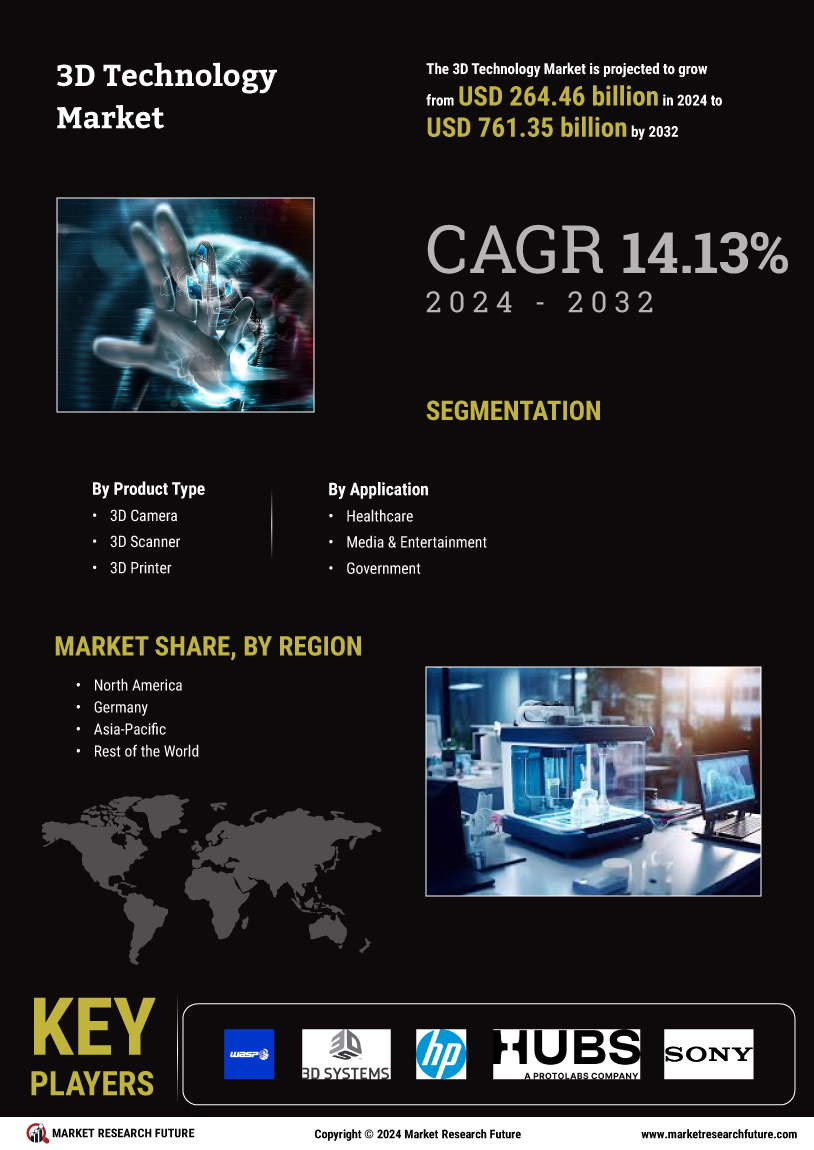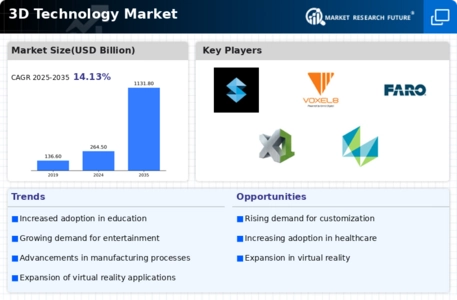Leading market companies are making significant R&D investments to diversify their product offerings, which will drive the 3D Technology market's expansion. Important market developments include new product releases, contractual agreements, mergers and acquisitions, greater investments, and collaboration with other organizations. Market participants also engage in several strategic actions to increase their worldwide presence. The market for 3D Technology industry is becoming more competitive. Therefore, it needs to offer reasonably priced products to grow and thrive.
Manufacturing locally to reduce operating costs is one of the primary business strategies manufacturers employ in the worldwide 3D Technology industry to assist customers and expand the market sector. The market for 3D Technology industry has recently provided some of the most important benefits. Major players in the 3D Technology market, including Stratasys Ltd., 3DGence and others, are attempting to increase market demand by investing in research and development operations.
The producer of FDM, PolyJetTM, P3, and stereolithography-based 3D printers, Stratasys is a market leader in polymer-based additive manufacturing, also known as 3D printing. The company's technologies are used to develop prototypes, manufacturing tools, and production parts for aerospace, automotive, healthcare, consumer goods, and education industries. For more than 30 years, Stratasys solutions have aided businesses in reducing the time, cost, and time-to-market associated with product development, lowering or eliminating tooling expenses and raising product quality. Three-dimensional printers, materials, software, professional services, and on-demand part production are all part of Stratasys' ecosystem of 3D printing products and expertise.
In February 2021, Stratasys Ltd. unveiled the first composite material for the platform for their award-winning range of F123 SeriesTM 3D printers. On the industrial-scale FDM 3D printers from Stratasys, carbon fiber materials have proven to be quite popular for various end-use applications, including jigs, fixtures, and tooling. Stratasys' high-performance F170TM, F270TM, and F370TM 3D printers now offer FDM ABS-CF10 to the engineering and manufacturing community, greatly increasing access to carbon fiber.
The goal of 3DGence has been to offer the most robustly constructed, high-performing, high-print-quality FFF / FDM 3D printers for industrial and commercial use. We certify a sophisticated hybrid material basis through a rigorous testing process, allowing our clients to print effectively and broaden the scope of uses on an improved open-source platform. A new benchmark for industrial 3D printing is being set by the 3DGence total cost of ownership, which is optimized.
In March 2022, A new Fused Filament Fabrication 3D printer, an AS9100 Certified PEEK Aero Filament, and a Material Management System have all been released by 3DGence.The 3DGence INDUSTRY F421 FFF system was created in response to the transition from 3D printing prototypes to producing finished products.
















Leave a Comment